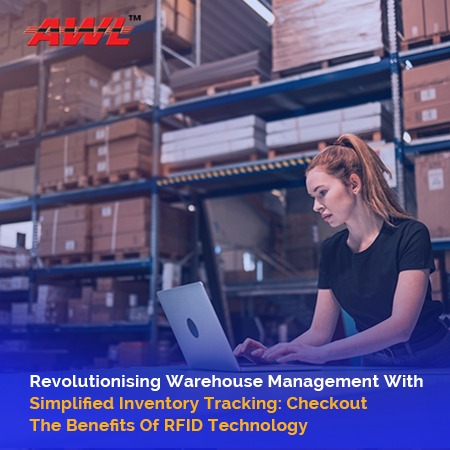

The demand for advanced inventory management has expanded more than ever as the e-commerce landscape changes and more and more consumers choose to purchase online due to the pandemic, which has raised user adoption. To fulfil the ever-increasing demand, several of these e-commerce behemoths keep tens of thousands of items in stock in their warehouses. Even for distribution companies or specific brands, inventory tracking and warehouse management have frequently turned into unpleasant tasks with multiple obstacles and inefficiencies. However, there is a system that could address many of the present problems with inventory tracking, save as much as billions of dollars, and prevent significant losses. Warehouse management is a complex and critical aspect of any business that involves the storage, distribution, and movement of goods.
The primary goal of warehouse management is to ensure that inventory levels are maintained at optimal levels, and that products are available to customers when they are needed. However, with the increasing complexity of modern supply chains, the manual tracking of inventory can be a time-consuming and error-prone process. This is where RFID (Radio Frequency Identification) technology comes in. RFID is a wireless technology that uses radio waves to automatically identify and track inventory items. It provides a real-time view of inventory levels, helping businesses to streamline their operations, reduce costs, and improve customer satisfaction.
Technology has played a significant role in revolutionising the way inventory is managed. The use of technology has made inventory management more efficient, accurate, and cost-effective. Here are some of the technologies used so far in inventory management:
This technology uses barcodes, which are unique identification codes, to track inventory items. Barcode scanning is widely used in retail and distribution centres, allowing for fast and accurate tracking of inventory.
RFID technology uses radio waves to automatically identify and track inventory items. RFID tags are attached to inventory items, and the data is transmitted to a central system, providing real-time inventory visibility.
WMS is a software system designed to manage the operations of a warehouse. It provides real-time inventory visibility, allowing businesses to track inventory levels, manage stock movements, and optimise their operations.
ADC is a technology that uses barcode scanning, RFID, or other automated systems to collect data. ADC can significantly improve the accuracy of inventory tracking and reduce the time and effort required for manual data entry.
AI is a technology that uses machine learning algorithms to analyse large amounts of data, providing insights and recommendations. AI can be used to optimise inventory management, providing real-time inventory visibility, predictive analysis, and improved forecasting.
In this blog, we will explore the benefits of RFID technology for warehouse management and how it can simplify the tracking of inventory.
One of the main benefits of RFID technology is real-time inventory visibility. Unlike barcode scanning, RFID can scan multiple items simultaneously, providing a real-time view of inventory levels. This allows businesses to have a more accurate picture of what is in their warehouse, reducing the risk of stock shortages and improving their ability to meet customer demand.
With RFID technology, manual data entry and human error are eliminated, improving the accuracy of inventory tracking. RFID tags can be attached to items, allowing them to be easily tracked throughout the supply chain. This helps to minimise the risk of lost or misdirected items and improves the efficiency of warehouse operations.
RFID technology can provide real-time alerts for inventory levels, helping businesses to quickly and accurately replenish stock. This allows for better inventory management, reducing the risk of overstocking and minimising the cost of inventory carrying. Additionally, RFID technology can help businesses to track the movement of goods from the time they arrive at the warehouse to the time they are shipped to customers, helping to improve the accuracy of inventory tracking and reducing the risk of misplacement.
RFID technology simplifies the tracking of inventory, reducing the time and effort required for manual data entry and reducing the risk of human error. This leads to increased productivity, as employees can focus on other tasks that require their attention. Additionally, RFID technology can help to reduce the time required for inventory counting, improving the accuracy of inventory tracking and reducing the time required for annual audits.
The use of RFID technology can help to reduce the costs associated with manual data entry, human error, and lost or misdirected items. By automating the tracking of inventory, RFID technology can reduce the time and effort required for manual data entry, improving the accuracy of inventory tracking and reducing the risk of lost or misdirected items. This leads to reduced costs, as businesses are able to save time and money by streamlining their operations.
With real-time inventory visibility, RFID technology helps businesses to improve their ability to meet customer demand. This leads to increased customer satisfaction, as customers receive the products they need in a timely manner. Additionally, RFID technology can help to reduce the risk of stock shortages, reducing the likelihood of lost sales and improving customer satisfaction.
In conclusion, RFID technology provides numerous benefits for warehouse management, including real-time inventory visibility, improved accuracy and efficiency, enhanced inventory management, increased productivity, reduced costs, and improved customer satisfaction. By implementing RFID technology in your warehouse, you can simplify the tracking of inventory and revolutionise your warehouse management operations. Moreover, AWL India is the leading warehousing and logistics company that provides the most advanced automation techniques that can be integrated in your existing supply chain model to boost productivity and increase profit margins for your business.

